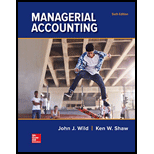
Concept explainers
For each of the following, (1) identify the type of account as an asset, liability, equity, revenue, or expense; (2) identify the normal balance of the account; and (3) enter debit (Dr.) or credit (Cr.) to identify the kind of entry that would increase the account balance. a. Land e.Accounts Receivable i. Fees Earned b. Cash f. Dividends j. Equipment c. Legal Expense g. License Fee Revenue k. Notes Payable d. Prepaid Insurance h. Unearned Revenue I. Common Stock Exercise D-4 Identifying type and normal balances of accounts C4
Equity Accounts: Equity Account comprises of items relating to the owner’s of the business. They include the common stock, retained earnings less dividends distributed. Owner’s Equity has a credit balance normally
Liability: Liabilities represent the amount which the business owes to outsiders. Examples of liabilities include bank loans, notes payable, accounts payable, outstanding expenses payable. All liability accounts normally have a credit balance.
Assets: Assets are the resources available to the business from which it will derive future economic benefits. Examples of asset are Land, Building, Plant and Machinery, Cash, Accounts Receivable, Prepaid expenses, Inventory. All asset accounts normally have a debit balance
Revenue: Revenue means the income generated from sale of goods or services. There may be other revenues also like rent received, Interest, Royalties and fees. Revenues would imply an inflow of cash or assets into the business. Revenues are recorded in accounts by debiting the consideration received whether cash/notes/accounts receivable and crediting the respective revenue account. Thus, all revenues normally have a credit balance.
Expenses: Expenses are the cost incurred in generating revenue transactions appear in the Income statement of a given period. Expenses are charged by debiting the respective expense account and hence they normally have a debit balance.
To classify:
The given accounts in desired categories.
Answer to Problem 4E
| Accounts | Type of Account | |
| a | Land | Asset |
| b | Cash | Asset |
| c | Legal Expense | Expense |
| d | Prepaid Insurance | Asset |
| e | Accounts Receivable | Asset |
| f | Dividends | Equity |
| g | License Fee Revenue | Revenue |
| h | Unearned Revenue | Liability |
| i | Fees Earned | Revenue |
| j | Equipment | Asset |
| k | Notes Payable | Liability |
| l | Common stock | Equity |
Explanation of Solution
a. Land is an asset as it can be used in the business for operations or sold to get cash.
b. Cash is the most liquid asset which can be used to purchase other assets, settle liabilities or pay expenses.
c. Legal Expense may mean the expenses incurred to meet legal consultancy charges, payment to governmental bodies to meet legal obligations and they are part of expenses.
d. Prepaid Insurance is asset as business has already paid for expenses and will derive service against them in future. When a business has prepaid Insurance, it will derive insurance benefits against them.
e. Accounts receivable is an asset as cash will be received from the debtors.
f. Dividends are payment to owners and hence are deducted from owner’s equity.
g. License Fee Revenue is revenue for granting licenses by the business to other entities.
h. Unearned Revenue is a liability as it an obligation to provides service or goods to the customer who has paid advances.
i. Fees Earned is a revenue for providing services.
j. Equipment is an asset as it is used in the operation of the business for more than one accounting year.
k. Notes Payable indicate the amount which the business owes to the holder of the notes. Notes payable are written promise to pay a specified sum of money on a specified date with or without interest issued by the business. It is a liability as it is an obligation to pay money.
f. Common stock represents the capital contributed by the owners and hence is part of Equity Thus, the type of all given accounts have been identified.
Equity Accounts: Equity Account comprises of items relating to the owner’s of the business. They include the common stock, retained earnings less dividends distributed. Owner’s Equity has a credit balance normally
Liability: Liabilities represent the amount which the business owes to outsiders. Examples of liabilities include bank loans, notes payable, accounts payable, outstanding expenses payable. All liability accounts normally have a credit balance.
Assets: Assets are the resources available to the business from which it will derive future economic benefits. Examples of asset are Land, Building, Plant and Machinery, Cash, Accounts Receivable, Prepaid expenses, Inventory. All asset accounts normally have a debit balance.
Revenue: Revenue means the income generated from sale of goods or services. There may be other revenues also like rent received, Interest, Royalties and fees. Revenues would imply an inflow of cash or assets into the business. Revenues are recorded in accounts by debiting the consideration received whether cash/notes/accounts receivable and crediting the respective revenue account. Thus, all revenues normally have a credit balance.
Expenses: Expenses are the cost incurred in generating revenue transactions appear in the Income statement of a given period. Expenses are charged by debiting the respective expense account and hence they normally have a debit balance.
The normal balances of these account.
Answer to Problem 4E
| Accounts | Normal Balance | |
| a | Land | Debit |
| b | Cash | Debit |
| c | Legal Expense | Debit |
| d | Prepaid Insurance | Debit |
| e | Accounts Receivable | Debit |
| f | Dividends | Debit |
| g | License Fee Revenue | Credit |
| h | Unearned Revenue | Credit |
| i | Fees Earned | Credit |
| j | Equipment | Debit |
| k | Notes Payable | Credit |
| l | Common stock | Credit |
Explanation of Solution
a. Land is an asset, so it normally has a debit balance.
b. Cash is an asset, so a debit increases the account balance.
c. Legal Expense is an expense, so a debit increases the account balance.
d. Prepaid Insurance is an asset, so a debit increases the account balance.
e. Accounts Receivable is an asset, so a debit increases the account balance
f. Dividends are payment to owners; a debit increases the account balance.
g. License Fee Revenue is revenue, so a credit increases the account balance
h. Unearned Revenue is a liability, so a credit increases the account balance.
i. Fees Earned is a revenue, so a credit increases the account balance.
j. Equipment is an asset, so a debit increases the account balance.
k. Notes Payable is a liability, so a credit increases the account balance.
f. Common stock is part of Equity, so a credit increases the account balance.
Thus, the kind of entry required to increase the given account balances have been identified.
Equity Accounts: Equity Account comprises of items relating to the owner’s of the business. They include the common stock, retained earnings less dividends distributed. Owner’s Equity has a credit balance normally.
Liability: Liabilities represent the amount which the business owes to outsiders. Examples of liabilities include bank loans, notes payable, accounts payable, outstanding expenses payable. All liability accounts normally have a credit balance.
Assets: Assets are the resources available to the business from which it will derive future economic benefits. Examples of asset are Land, Building, Plant and Machinery, Cash, Accounts Receivable, Prepaid expenses, Inventory. All asset accounts normally have a debit balance.
Revenue: Revenue means the income generated from sale of goods or services. There may be other revenues also like rent received, Interest, Royalties and fees. Revenues would imply an inflow of cash or assets into the business. Revenues are recorded in accounts by debiting the consideration received whether cash/notes/accounts receivable and crediting the respective revenue account. Thus, all revenues normally have a credit balance.
Expenses: Expenses are the cost incurred in generating revenue transactions appear in the Income statement of a given period. Expenses are charged by debiting the respective expense account and hence they normally have a debit balance.
To identify:
The kind of entry to increase the given account balance.
Answer to Problem 4E
| Accounts | Type of entry | |
| a | Land | Debit |
| b | Cash | Debit |
| c | Legal Expense | Debit |
| d | Prepaid Insurance | Debit |
| e | Accounts Receivable | Debit |
| f | Dividends | Debit |
| g | License Fee Revenue | Credit |
| h | Unearned Revenue | Credit |
| i | Fees Earned | Credit |
| j | Equipment | Debit |
| k | Notes Payable | Credit |
| l | Common stock | Credit |
Explanation of Solution
a. Land is an asset, so a debit increases the account balance
b. Cash is an asset, so a debit increases the account balance
c. Legal Expense is an expense, so a debit increases the account balance
d. Prepaid Insurance is an asset, so a debit increases the account balance
e. Accounts Receivable is an asset, so a debit increases the account balance
f. Dividends are payment to owners; a debit increases the account balance.
g. License Fee Revenue is revenue, so a credit increases the account balance
h. Unearned Revenue is a liability, so a credit increases the account balance.
i. Fees Earned is a revenue, so a credit increases the account balance.
j. Equipment is an asset, so a debit increases the account balance
k. Notes Payable is a liability, so a credit increases the account balance
f. Common stock is part of Equity, so a credit increases the account balance.
Thus, the kind of entry required to increase the given account balances have been identified.
Want to see more full solutions like this?
Chapter D Solutions
Managerial Accounting
- Please explain the solution to this financial accounting problem with accurate explanations.arrow_forwardPlease provide the solution to this financial accounting question with accurate financial calculations.arrow_forwardI need assistance with this general accounting question using appropriate principles.arrow_forward
- Can you help me find the accurate solution to this financial accounting problem using valid principles?arrow_forwardPlease provide the solution to this financial accounting question with accurate financial calculations.arrow_forwardI need help with this financial accounting problem using proper accounting guidelines.arrow_forward
- Principles of Accounting Volume 1AccountingISBN:9781947172685Author:OpenStaxPublisher:OpenStax College
 College Accounting (Book Only): A Career ApproachAccountingISBN:9781305084087Author:Cathy J. ScottPublisher:Cengage Learning
College Accounting (Book Only): A Career ApproachAccountingISBN:9781305084087Author:Cathy J. ScottPublisher:Cengage Learning Intermediate Accounting: Reporting And AnalysisAccountingISBN:9781337788281Author:James M. Wahlen, Jefferson P. Jones, Donald PagachPublisher:Cengage Learning
Intermediate Accounting: Reporting And AnalysisAccountingISBN:9781337788281Author:James M. Wahlen, Jefferson P. Jones, Donald PagachPublisher:Cengage Learning  College Accounting, Chapters 1-27AccountingISBN:9781337794756Author:HEINTZ, James A.Publisher:Cengage Learning,
College Accounting, Chapters 1-27AccountingISBN:9781337794756Author:HEINTZ, James A.Publisher:Cengage Learning, Auditing: A Risk Based-Approach (MindTap Course L...AccountingISBN:9781337619455Author:Karla M Johnstone, Audrey A. Gramling, Larry E. RittenbergPublisher:Cengage Learning
Auditing: A Risk Based-Approach (MindTap Course L...AccountingISBN:9781337619455Author:Karla M Johnstone, Audrey A. Gramling, Larry E. RittenbergPublisher:Cengage Learning





